
Are the stone walls along the steep back streets of Hong Kong really being held up by the jungle-like roots that cover them?
Can there really be a temple dedicated to tranquility in such a busy modern city?
And why did the city paint over modern art that was potentially worth millions of dollars?
The answers are revealed beautifully in fascinating tours of the hidden spaces of Hong Kong that are easily done while your cruise ship is in port or on a pre-or post cruise stay. . On our recent visit after a cruise that ended in Hong Kong, my wife and I signed up for day trips guided by knowledgeable locals who give personalized tours.
One was a ramble through back lanes, temples, shops and restaurants in the oldest part of central Hong Kong that you might completely miss if you didn’t know what you were looking for. The other took us by car into corners of Kowloon that are completely different than the gleaming modern city that has grown around them.
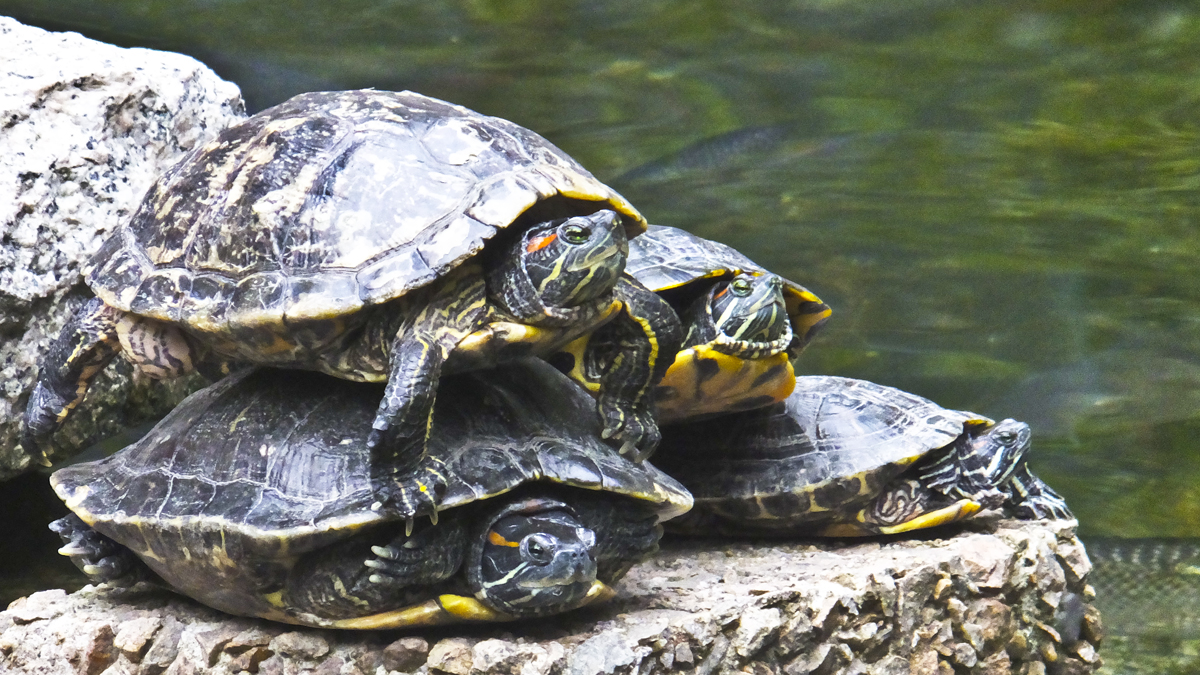
1) Taking Possession of Ghosts and Myths
Our first tour is a walk through Old Town Central, which is where Hong Kong got its start. Our guide from the tour company Walk in Hong Kong has lived here all her life and we met in a leafy park that seems serene now, but has been the site of more than its share of noisy history.
Today it’s about a mile from the edge of Hong Kong’s Victoria Harbor, but back in 1841, this was the shoreline and the spot where the British first landed to claim Hong Kong Island in the name of Queen Victoria. A flag raising and firing of canons here marked the official claim to Hong Kong, and the landing venue was renamed Possession Point.
Where the British raised their flag is now a reflecting pool where curious turtles gaze lazily at kids playing games on the sidewalks that ramble around the rocks of this wooded square.
This was a much busier place half a century ago. The park was a getaway for throngs of people living in low-cost housing in the area and it became the site of a popular night market with cheap food and free entertainment that gave it the nickname the “poor man’s nightclub.” Today, the surrounding high rises are much more prosperous.
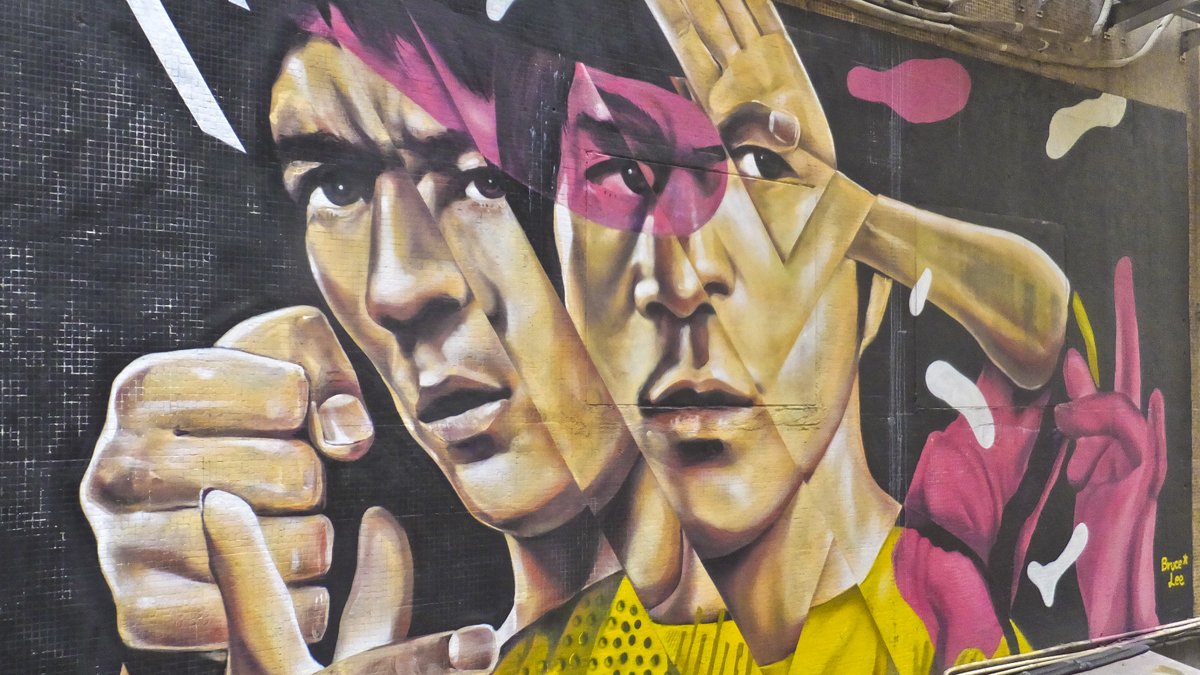
2) Wandering through PoHo
Hollywood Road runs along the park and it’s the main artery through this district of east central Hong Kong known as Sheung Wan. Built in 1844 to accommodate British troops being stationed here, the road takes its name from the holly bushes that used to grow around the area.
Rather than heading directly down Hollywood, our guide takes us meandering around back lanes that ramble up the steep hill above the road into an area today nicknamed PoHo. Po means treasure in Chinese and several of the lanes in the area have the word Po in their name. It was once a warren of scruffy family run shops but has now become gentrified with the arrival of a new generation of entrepreneurs, who opened cafés, boutiques and design studios.
The increasing wealth has been also good for the many quaint old-time stores that still operate in the area and sell amazing inventories of wicker, brass hardware and traditional Chinese herbal remedies. Rising fortunes mean that upscale Mercedes and exotic sports cars now line the narrow lanes where once pedicabs and wheelbarrows were the main form of transport.
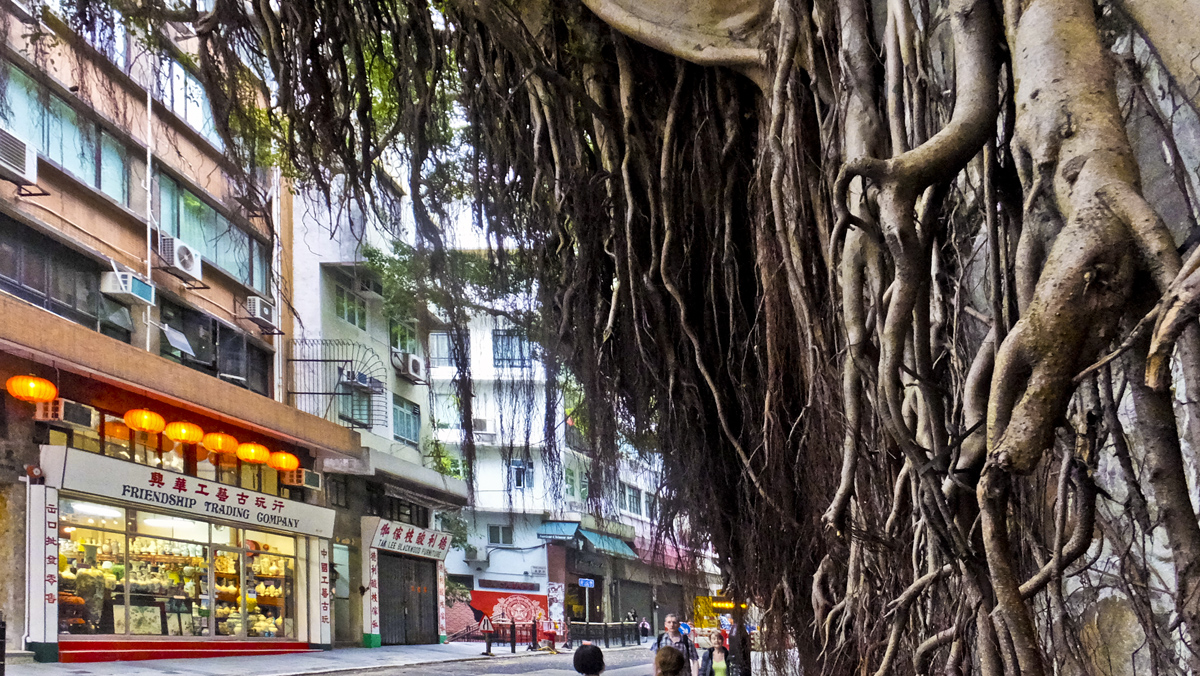
3) Walls, old and new
Walls along the lanes have become canvases for artists who have painted murals several stories high in many places. At first, the city frowned on the paintings as defacement of public spaces, our guide explained, but several of the artists have become prominent and it’s said that Keith Haring paintings that once adorned one corner that the city painted over could today be worth millions, in both Hong Kong and U.S. dollars.
A French wall artist, Invader, whose mosaics are inspired by video games like PacMan and Space Invaders, does murals that sell for price tags in six digits but he also got a cold reception in Hong Kong. In 2014, police removed or painted over 35 of his works that he’d done around the city. Realizing their value now, murals by other wall artists get left alone and they’ve become important tourist attractions.
And speaking of walls, a dramatic legacy of the past lines many of the roads here. Between the 1800s and the Second World War, the Hong Kong Government constructed stone walls to prevent landslides. Open joints between stones allowed banyan trees to sprout between the cracks. In reality, they proved more stabilizing than the stone, with their thick exposed roots engulfing the rock faces. They’ve become landmarks in themselves and some of the most impressive are along Bonham Road.
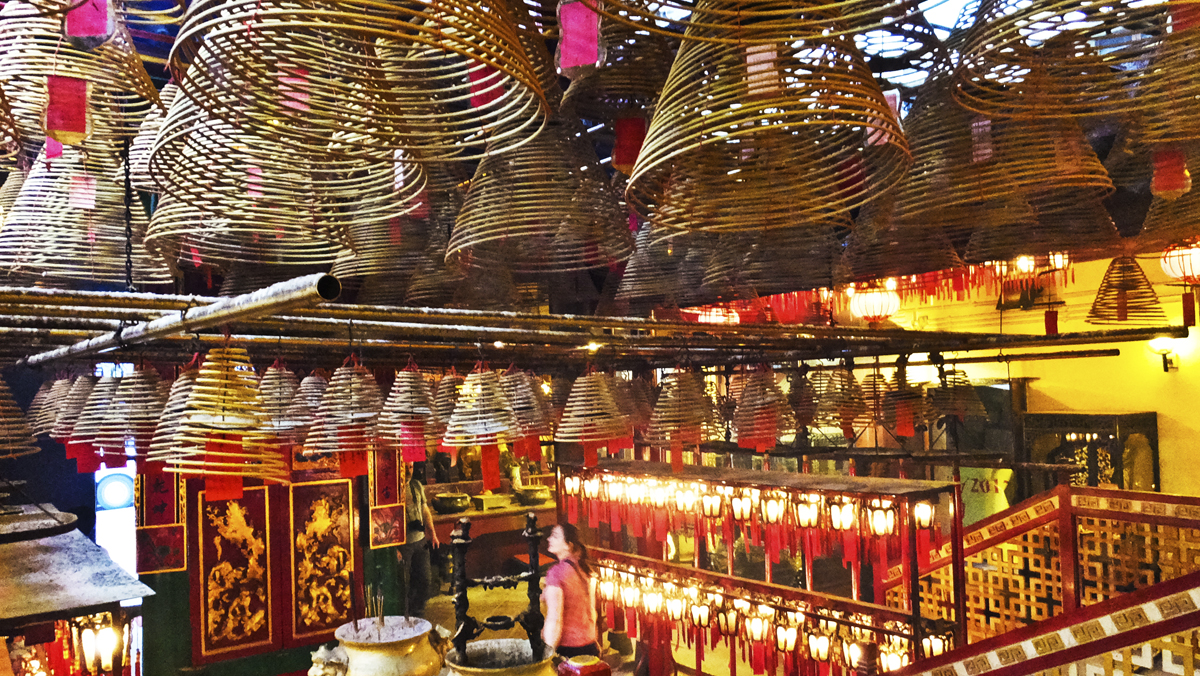
4) Lighting up in the temples
Before Hollywood Road became the art dealer’s road, it was known for its funeral homes and temples for honoring the dead. One of the most venerable temples is the Man Mo, that dates to 1842. It’s dedicated to the gods of Literature and War and one of the altars features a bronze sculpture of a large hand holding a pen. You can buy a ribbon to hang your prayer alongside the shrine and then light a stick of incense. As it turns out, the same gods are also the guardians of history, so antique shop owners stop by regularly to pay their respects as well.
As a tourist, you don’t have to hesitate to stop in and become part of the scene at the temples. You can take photos, but be respectful, of course. It’s a good etiquette and great luck to drop a small bill into the offering box for the upkeep of the incredibly ornate and fragile shrines.
Less known, but every bit as fascinating, is the nearby Kwong Fuk Ancestral Hall, a hard-to-find building that was first built in 1856 as a storeroom for corpses awaiting burial in China. It became a shrine to ancestors for people too poor to actually send the bodies of parents back to China. It’s still a place of pilgrimage for families to honor relatives and there are hundreds of touching antique photos lining the walls.
The air in both these temples is hazy and pungent from the incense that’s burning continually as an offering to the spirits. The giant spiralling coils hanging from the ceiling can burn continuously for up to a week. You’ll find the smoky scent clinging to your clothes for several hours after you leave the temple, so it’s probably best to head back to your hotel and change before you plan to go out to dinner.
Kowloon discoveries
Another day, we joined a guide from Stories of the Place for a fascinating look at little-known history of Kowloon.
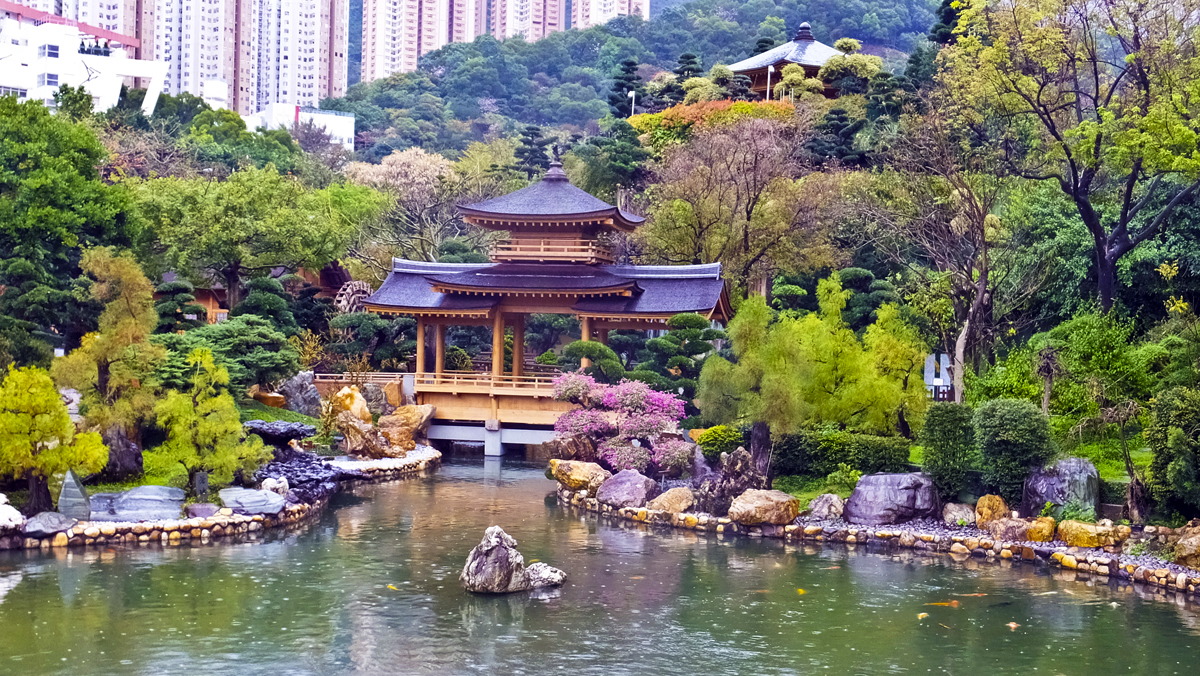
5) Nan Lian Garden
This idyllic traditional garden isn’t what you’d expect to be here at all in the midst of cliffs of modern high rises. And it’s relatively new itself.
A green valley in Kowloon is home of the Chi Lin Nunnery, where recent additions have has created a magnificent Tang Dynasty-style (AD 618–907) Buddhist temple containing gold, clay and wooden statues representing divinities including the Sakyamuni Buddha and bodhisattvas.
The Nan Lian garden around the complex with its formal landscaping and its tranquil reflecting ponds was a joint project of the nunnery and the Hong Kong Government that opened to the public just 10 years ago.
Every rock, tree and pond filled with glittering goldfish in the garden has been arranged according to rules followed for over 1,000 years. A collection of colourful boulders scattered around the garden come from all the various provinces of China and each has a plaque describing its significance.
The nuns pay only $1 rent a year for this large valley and while it’s become surrounded by high-rise apartments, it remains serene and contemplative. A centerpiece structure called the Pavilion of Absolute Perfection is connected by two bridges and there’s a Chinese tea house that’s a perfect place to stop and reflect on it all with a soothing beverage and a snack.
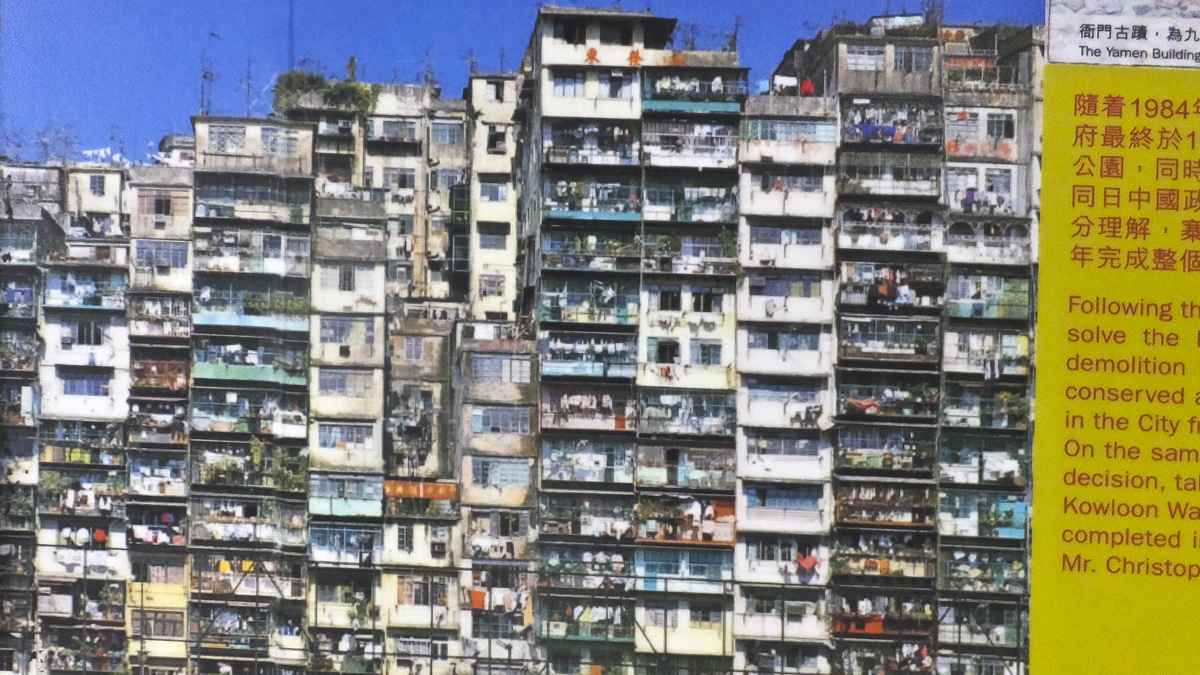
6) Kowloon Walled City Park
One of the most fascinating forgotten stories of all is the history of the Kowloon Walled City, once a 2.7-hectare enclave of opium parlors, whorehouses and gambling dens run by triads. It was a place where it’s said police, health inspectors and even tax collectors feared to tread.
At its height, it was believed to have become the most densely populated place on earth, with 35,000 people crammed into more than 300 interconnected high-rise buildings that were built by residents without the help of architects or engineers. Of course, no one is certain how many it did house because there was never any record keeping of who lived there.
Its history dates back to the Sung Dynasty of 960-1297, when it began as a small fort to house the imperial soldiers who controlled the salt trade. In the second half of the nineteenth century, the Chinese made it a garrison town for soldiers and officials as the area faced invasion by the British, who held Hong Kong Island.
In 1898, it became the only part of Hong Kong that China was unwilling to cede to Britain under the 99-year lease of Kowloon and the New Territories. When the Japanese invaded during the second world war, they demolished old parts of the Walled City and used the pieces in construction of Kai Tak airport.
Clearing the area made it attractive to Chinese refugees who were looking for a low-rent place that didn’t require them to have a visa to stay after the war. The population swelled as new arrivals built multiple layers on top of existing flats, many rising more than 10 stories high by the 1980s.
The government tried to clear the city several times, but each time, the residents threatened to create a diplomatic incident. It wasn’t until March, 1993, that the last residents finally accepted the government’s rehousing terms and compensation terms.
The towers that had been crudely built by amateurs from wood and hand-mixed concrete had to be demolished. But one building and part of the South Gate remain as intriguing reminders of what life in the walled city was like. Today, the site has become a park with beautiful flower gardens.
It was the end to a bizarre chapter of Hong Kong’s colonial past. And a visit capped a fascinating day that will live in my memory.





